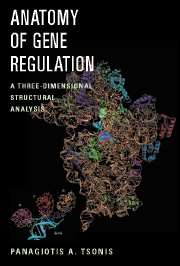Book contents
- Frontmatter
- Contents
- Preface
- 1 A General Introduction to 3-D Structures
- 2 The Higher Organization of the Genome
- 3 Structure of DNA and Telomeres
- 4 DNA Replication
- 5 Transcription in Prokaryotes
- 6 Transcription in Eukaryotes
- 7 Splicing
- 8 Modifications of mRNA
- 9 Compartmentalization of Transcription
- 10 Protein Synthesis
- 11 The Birth and Death of Proteins
- Further Reading and References
- Index
9 - Compartmentalization of Transcription
Published online by Cambridge University Press: 24 May 2010
- Frontmatter
- Contents
- Preface
- 1 A General Introduction to 3-D Structures
- 2 The Higher Organization of the Genome
- 3 Structure of DNA and Telomeres
- 4 DNA Replication
- 5 Transcription in Prokaryotes
- 6 Transcription in Eukaryotes
- 7 Splicing
- 8 Modifications of mRNA
- 9 Compartmentalization of Transcription
- 10 Protein Synthesis
- 11 The Birth and Death of Proteins
- Further Reading and References
- Index
Summary
PRIMER The spliced and modified mRNA must be transported to the cytoplasm for translation that will result in protein synthesis, which is the ultimate goal of transcription. The question addressed in this chapter involves the degree to which the topology of transcription and movement of the transcripts toward the nuclear pores is organized. This area of inquiry is a relatively new, and experiments are possible only by using modern image analysis techniques. Evidence is presented that transcription and movement of transcripts are organized topologically in the nucleus. Such an organization is compared with DNA replication. This information is very useful in understanding the spatial employment of these events.
So far, we have covered areas from the organization of DNA in the chromosomes to replication and the different steps of transcription. We have done all this with the three-dimensional aspects of molecular biology in mind; therefore, our study was oriented toward precise and organized structures. We have seen how precisely the splicing apparatus is folded to create unique structures and arrangement for the removal of the introns. Such structures are correlated to functions and also have an evolutionary history to account for them. What is, however, the picture when we move ourselves from the small scales to the larger ones? Are all the centers of transcription organized? Are all the splicing centers organized? Is their location in the nucleus determined or unique?
- Type
- Chapter
- Information
- Anatomy of Gene RegulationA Three-dimensional Structural Analysis, pp. 184 - 190Publisher: Cambridge University PressPrint publication year: 2003



